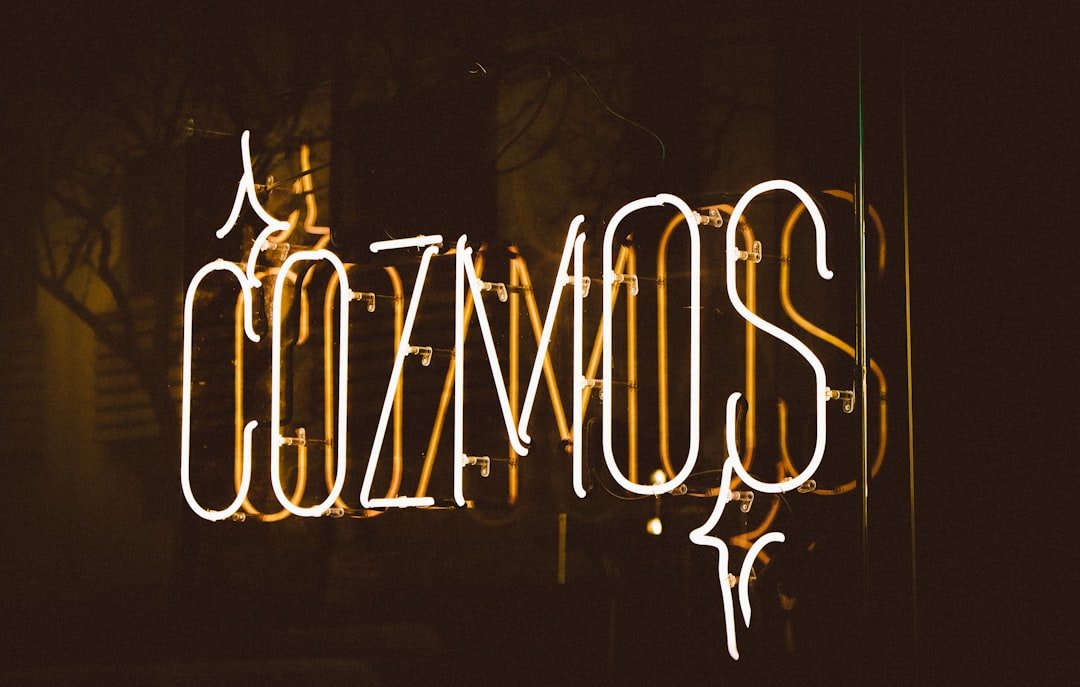Now Reading: Mastering Minimalism in Horror Game Design
-
01
Mastering Minimalism in Horror Game Design
Mastering Minimalism in Horror Game Design

As I delve into the world of minimalist horror games, I find that atmosphere plays a pivotal role in shaping the player’s experience. Unlike traditional horror games that often rely on elaborate graphics and complex narratives, minimalist horror strips away the excess to focus on the essence of fear. The sparse environments, coupled with haunting soundscapes, create a sense of isolation and dread that lingers long after the game is over.
I’ve come to appreciate how this simplicity can amplify the emotional weight of a scene, allowing players to project their own fears onto the blank canvas presented before them. In minimalist horror, every element is intentional. The absence of clutter in the environment invites me to pay closer attention to subtle details that might otherwise go unnoticed.
Shadows flicker in the corners of my vision, and the silence is often more deafening than any scream. This carefully crafted atmosphere cultivates a sense of unease, making me hyper-aware of my surroundings. It’s as if the game is whispering secrets, urging me to explore while simultaneously warning me of the dangers that lurk just beyond my line of sight.
The atmosphere becomes a character in its own right, one that shapes my journey through fear and uncertainty.
Key Takeaways
- Atmosphere is crucial in minimalist horror games to create a sense of unease and fear.
- Sound design plays a key role in building tension and fear in minimalist horror games.
- Subtle visuals can be powerful in evoking fear and dread in minimalist horror games.
- Compelling narratives can be created through minimalist storytelling in horror games.
- Limited resources can enhance the player’s sense of vulnerability in minimalist horror games.
Utilizing Sound Design to Create Tension and Fear
Sound design is an essential tool in the minimalist horror genre, and I find it fascinating how it can evoke fear without relying on visual stimuli. The use of ambient sounds—creaking floorboards, distant whispers, or the unsettling rustle of leaves—can send chills down my spine. These auditory cues create an immersive experience that heightens my anxiety and keeps me on edge.
I’ve noticed that even the most mundane sounds can take on a sinister quality when placed in the right context, transforming an ordinary environment into a breeding ground for terror. Moreover, silence plays a crucial role in sound design. In minimalist horror games, moments of quiet can be just as impactful as sudden bursts of noise.
The absence of sound creates a palpable tension, making me acutely aware of my own heartbeat and breathing. It’s during these quiet moments that I often feel the most vulnerable, as if something is lurking just out of sight, waiting for the perfect moment to strike. This interplay between sound and silence not only enhances the atmosphere but also deepens my emotional connection to the game, drawing me further into its chilling narrative.
The Power of Subtle Visuals in Evoking Fear

In minimalist horror games, visuals are often stripped down to their most basic forms, yet this simplicity can be incredibly powerful. I’ve found that subtle visual cues—like a flickering light or a shadow that seems to move on its own—can evoke a sense of dread far more effectively than elaborate graphics. The use of negative space allows my imagination to fill in the gaps, creating a more personal and intimate experience with fear.
It’s as if the game is inviting me to confront my own anxieties rather than presenting them in a pre-packaged format. The color palette in minimalist horror also plays a significant role in shaping my emotional response. Muted tones and stark contrasts can create an unsettling atmosphere that lingers in my mind long after I’ve put down the controller.
I’ve noticed that when colors are used sparingly, they become more impactful; a splash of red against a predominantly gray background can evoke feelings of danger and urgency. This careful consideration of visual elements allows minimalist horror games to convey complex emotions without overwhelming me with detail, making each moment feel significant and charged with meaning.
Creating a Compelling Narrative with Minimalist Storytelling
Minimalist storytelling is an art form that I find particularly compelling in horror games. By stripping away extraneous details and focusing on core themes, these narratives often resonate on a deeper level. I’ve experienced how a simple premise—such as isolation or loss—can be explored through minimal dialogue and sparse exposition, allowing me to engage with the story on my own terms.
This approach encourages me to piece together the narrative from subtle hints and environmental storytelling, creating a sense of discovery that feels rewarding. Moreover, minimalist storytelling often leaves room for interpretation, inviting me to reflect on the themes presented throughout the game. I’ve found that this ambiguity can enhance the horror experience; it allows my mind to wander into darker territories as I contemplate what lies beneath the surface.
The lack of explicit answers forces me to confront my own fears and uncertainties, making the narrative feel personal and relevant. In this way, minimalist horror games become not just a means of entertainment but also a vehicle for introspection and emotional exploration.
Using Limited Resources to Enhance the Player’s Sense of Vulnerability
One of the most striking aspects of minimalist horror games is their ability to evoke vulnerability through limited resources. As I navigate these desolate worlds, I often find myself grappling with scarcity—whether it’s dwindling supplies or restricted movement options. This limitation heightens my sense of unease, as I am constantly aware of my fragility in an environment filled with unseen threats.
The feeling of being unarmed and exposed amplifies my anxiety, forcing me to make strategic decisions that could mean the difference between survival and demise. The clever use of limited resources also encourages me to engage more deeply with the game mechanics. I’ve learned to value every item I come across, whether it’s a flashlight with fading batteries or a single health pack.
This scarcity fosters a sense of tension that permeates every encounter, as I weigh my options carefully before taking action. In minimalist horror games, every choice feels significant; even the simplest decision can lead to dire consequences. This heightened awareness of my surroundings and resources creates an immersive experience that keeps me invested in the outcome.
Designing Puzzles and Challenges that Fit the Minimalist Aesthetic

Puzzles and challenges in minimalist horror games are often designed with simplicity in mind, yet they can be incredibly effective at enhancing the overall experience. I appreciate how these puzzles often require me to think critically while remaining true to the minimalist aesthetic. Instead of convoluted mechanics or overly complex tasks, I find myself engaging with straightforward challenges that encourage exploration and observation.
This design philosophy allows me to immerse myself fully in the game world without feeling overwhelmed by unnecessary complexity. Moreover, minimalist puzzles often reflect the themes of isolation and vulnerability present throughout the game. I’ve encountered challenges that require me to confront my fears directly or navigate through dark environments with limited visibility.
These obstacles not only serve as gameplay mechanics but also reinforce the emotional weight of the narrative. By integrating puzzles seamlessly into the minimalist framework, developers create an experience that feels cohesive and intentional, drawing me deeper into the haunting atmosphere.
Balancing Minimalism with Player Engagement and Immersion
While minimalism is a defining characteristic of horror games, I’ve found that striking a balance between simplicity and player engagement is crucial for maintaining immersion. Developers must carefully consider how much information to provide without overwhelming players or detracting from the overall experience. In my journey through minimalist horror games, I’ve noticed that effective pacing is key; moments of tension should be interspersed with quieter periods that allow me to reflect on what I’ve encountered.
Engagement also comes from meaningful interactions within the game world. I appreciate when developers create opportunities for exploration and discovery without cluttering the environment with unnecessary distractions. By providing just enough context through environmental storytelling or subtle clues, I feel encouraged to delve deeper into the narrative while remaining grounded in the minimalist aesthetic.
This balance fosters a sense of immersion that keeps me invested in both the gameplay and story.
Leveraging Environmental Storytelling to Build a Haunting World
Environmental storytelling is one of the most powerful tools in minimalist horror games, allowing developers to convey rich narratives through subtle details within the game world. As I explore these desolate landscapes, I often find myself piecing together fragments of stories hidden within abandoned rooms or eerie settings. A broken doll lying on the floor or faded photographs on a wall can evoke emotions and memories that resonate deeply with me, creating an atmosphere steeped in history and tragedy.
I’ve come to appreciate how environmental storytelling invites me to engage actively with the game world rather than passively consuming information. Each object becomes a clue, urging me to consider its significance within the larger narrative context. This approach not only enhances immersion but also deepens my emotional connection to the story being told.
In minimalist horror games, every detail matters; it’s through these small yet impactful elements that I uncover layers of meaning and experience a haunting world that feels alive.
Incorporating Minimalist Character Design to Enhance Fear Factor
Character design in minimalist horror games often reflects the overall aesthetic by embracing simplicity while still evoking fear. I’ve noticed that characters are frequently stripped down to their most essential features—faceless figures or silhouettes—that allow my imagination to fill in the gaps. This ambiguity can be unsettling; it forces me to confront my own fears about what lies beneath the surface rather than relying on explicit visual cues.
Moreover, minimalist character design often emphasizes movement and behavior over intricate details. The way a character moves or interacts with their environment can convey a sense of menace without needing elaborate animations or textures. I’ve found that this approach enhances my emotional response; when faced with an unknown entity whose intentions are unclear, I feel an instinctual fear that resonates deeply within me.
In this way, minimalist character design becomes an integral part of crafting an atmosphere filled with tension and dread.
Embracing Simplicity in Game Mechanics for Maximum Impact
Simplicity in game mechanics is another hallmark of minimalist horror games that resonates with me on multiple levels. By focusing on core gameplay elements rather than overwhelming players with complex systems, developers create an experience that feels intuitive and accessible. I appreciate how streamlined mechanics allow me to immerse myself fully in the narrative without getting bogged down by unnecessary complications.
This embrace of simplicity also enhances emotional engagement; when mechanics are easy to grasp, I can focus on my reactions to fear rather than struggling with controls or systems. In minimalist horror games, every action feels deliberate and impactful—whether it’s hiding from an unseen threat or solving a puzzle under pressure. This clarity fosters a sense of urgency that heightens tension and keeps me invested in my journey through fear.
The Role of Minimalist UI and HUD in Immersive Horror Experiences
The user interface (UI) and heads-up display (HUD) play crucial roles in shaping my experience within minimalist horror games. A cluttered interface can detract from immersion; therefore, developers often opt for minimalistic designs that prioritize essential information while maintaining an atmospheric aesthetic. I’ve found that when UI elements are kept simple—perhaps just displaying health status or objectives—I can remain fully engaged with the game world without distractions pulling me away from the experience.
Moreover, a well-designed UI can enhance storytelling by integrating seamlessly into the environment rather than feeling like an intrusive overlay. For instance, when information is presented through environmental cues—like notes scattered throughout an abandoned house—I feel more connected to the narrative unfolding around me. This thoughtful approach allows me to remain immersed in both gameplay and story while reinforcing the haunting atmosphere characteristic of minimalist horror games.
In conclusion, exploring minimalist horror games has opened my eyes to how simplicity can evoke profound emotions and create unforgettable experiences. From atmospheric design to soundscapes that chill me to my core, every element works together harmoniously to craft a world steeped in fear and uncertainty. As I continue my journey through these haunting landscapes, I am reminded that sometimes less truly is more—especially when it comes to confronting our deepest fears.
If you’re interested in creating a minimalist horror game, you may also want to check out this article on how The Last of Us redefined narrative in gaming. Understanding how storytelling can enhance the horror experience in games can provide valuable insights for your own design process.



























